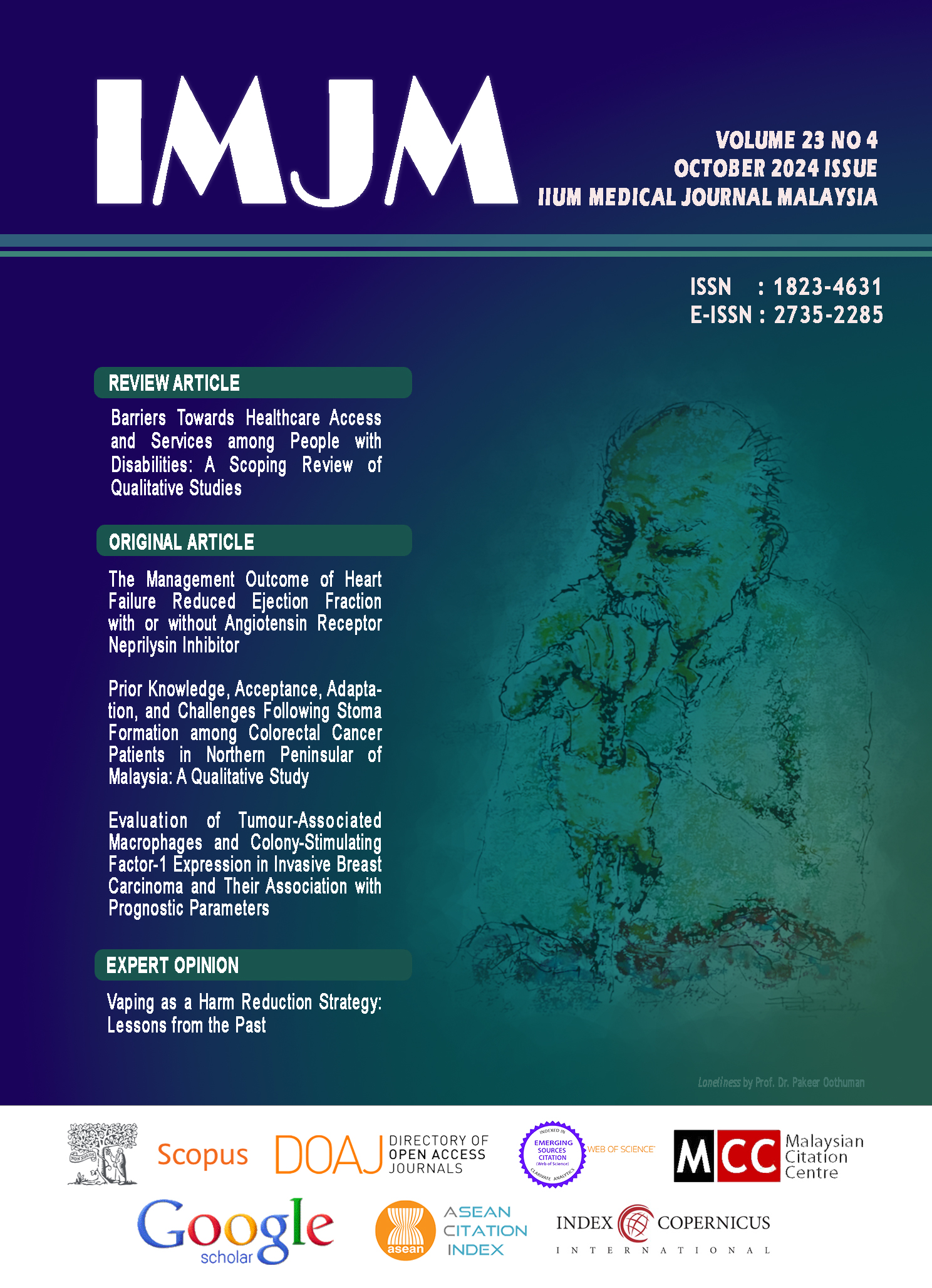Effect of Tualang Honey-Mediated Silver Nanoparticles on TNF-α level, Caspase-3 Activity and Hippocampal Morphology in Kainic Acid-Induced Neurodegeneration in Male Rats
DOI:
https://doi.org/10.31436/imjm.v23i04.2223Keywords:
Tualang honey, Silver nanoparticles, TNF-α, Caspase-3, Hippocampus, NeurodegenerationAbstract
INTRODUCTION: Despite being common disorder, the curative treatment for degenerative diseases are not yet available. Although Tualang honey (TH) has been reported to protect against neurodegeneration, but the effect of TH-mediated silver nanoparticles (THSN) on neurodegeneration is poorly understood. Thus, we conducted this study aimed to determine the effects of THSN on the levels of tumour necrosis factor alpha (TNF-α), caspase-3 activity, and hippocampal morphology in Kainic Acid (KA) induced neurodegeneration in rats. MATERIALS AND METHODS: A total of 72 Male Sprague Dawley rats were randomized into six groups which were the control, THSN 10mg, THSN 50 mg, KA only, KA+THSN 10 mg, and KA+THSN 50 mg groups. Each group was pre-treated orally with either distilled water or THSN (10 mg/kg or 50 mg/kg), according to their respective group. Following the last pre-treatment, each rat was injected with KA (15 mg/kg) or saline. After 24 h and 5 days of KA induction, all rats were sacrificed, and the hippocampus from each rat was harvested. Cresyl Violet and Fluoro Jade C staining were carried out to examine the number of viable cells and degenerating neurons. TNF-α level and caspase-3 activity in the hippocampus were measured using commercially available ELISA kits. RESULTS: Rats with KA-induced neurodegeneration demonstrated a significant increase (p<0.05) of TNF-α level and caspase-3 activity with a lower number of viable cells and increased number of degenerating neurons in the hippocampus. The pre-treatments of THSN groups improved these changes by lowering the TNF-α level and caspase-3 activity and decreasing the number of degenerating neurons. CONCLUSION: THSN could have potential neuroprotective effects in ameliorating TNF-α level, caspase-3 activity, and hippocampal damage in KA-induced male rats.
Downloads
Downloads
Published
How to Cite
Issue
Section
License
All material submitted for publication is assumed to be submitted exclusively to the IIUM Medical Journal Malaysia (IMJM) unless the contrary is stated. Manuscript decisions are based on a double-blinded peer review process. The Editor retains the right to determine the style and if necessary, edit and shorten any material accepted for publication.
IMJM retain copyright to all the articles published in the journal. All final ‘proof’ submissions must be accompanied by a completed Copyright Assignment Form, duly signed by all authors. The author(s) or copyright owner(s) irrevocably grant(s) to any third party, in advance and in perpetuity, the right to use, reproduce or disseminate the research article in its entirety or in part, in any format or medium, provided that no substantive errors are introduced in the process, proper attribution of authorship and correct citation details are given, and that the bibliographic details are not changed. If the article is reproduced or disseminated in part, this must be clearly and unequivocally indicated.










